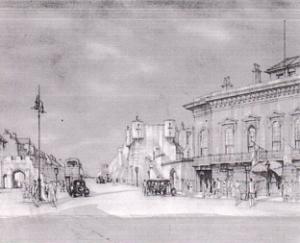
I see that the media have picked up on St John’ s plans to expand onto the Union Tce car park. It’s a project that the University have been working on for the last 12 months at least.
The stumbling block is, of course, the loss of 145 car and 35 coach parking spaces. The car park brings in around £400,000 a year (£40,000 for coaches) in income for the Council; so a capital receipt of £2 million looks to be on the low side anyway. Some users might divert to other car parks but, with the Haymarket car park also likely to be closed shortly for redevelopment, traders will be concerned about the number of spaces being lost.
One other worry will be the new Labour Councils commitment to the Alan Simpson report which looked at the layout and function of the City centre. Amongst the ideas that arise out of it was the need for a dedicated public transport route possibly through Gillygate, St Leonards Place and Lendal. It is the latest in a series of reports on the future of streets like Gillygate (the illustration is of a 1948 version)
This very much points to the need for the Local Development Framework (LDF,) and in particular future land uses, to be agreed before any piecemeal decisions are taken on the future of car parks and indeed transport systems generally.
There isn’t, or shouldn’t be, any link between the Universities project and the option of reinstalling “pay on exit!” barriers at surface level car parks. This system was abandoned in York nearly 20 years ago mainly because of the cost of maintaining the equipment. The remains of the barrier mechanisms can still be seen at the entrance to the Castle car park.
Effectively “pay on exit” needs 24/7 call out assistance which pushes up running costs (or otherwise drivers will become trapped in the car parks when the careless, or the mischievous, damage the barriers). Most of the systems currently in use involve the validation of tickets at separate machines which themselves are vulnerable in poor weather. Barrier and ticket equipment for only the main car parks would cost around £500,000.
Those favouring the system claim that visitors will stay longer in the City if they don’t have to worry about when their pay and display ticket will expire.
Maybe so.
But there already is a pay by mobile phone option, which effectively offers the same advantage. Before long we will have data enabled mobile phones and charge cards which could be used to offer additional flexibility such as off peak discount rates. These are likely to be more attractive to visitors than the pay on exit option.
Those who want to can use one of the 2 (private sector) pay on exit multi storey car parks, both are under cover.
Any spare capital receipts that the Council might receive would be better invested in improving facilities for those walking into and around the City centre.

